#Stropharia
Explore tagged Tumblr posts
Text

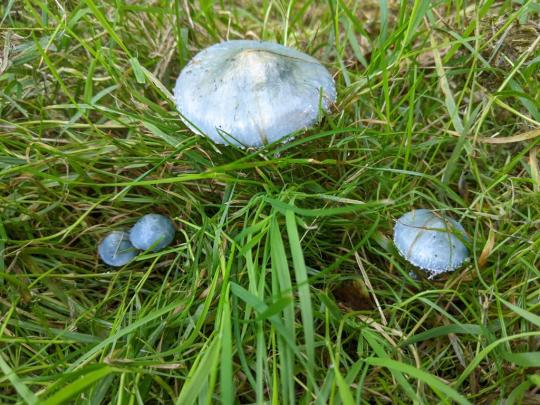
Blue roundhead (Stropharia caerulea)
These are more photos sent to me by a friend. They're gorgeous, and one of the very few blue-ish fungi that grow in the UK (or worldwide, that I know of, though my knowledge is very localised!). This obviously makes them an easy spot, and gorgeous to observe.
#mycology#mushroom hunting#blue fungi#wild fungi#blue roundhead#inedible fungi#potentially poisonous fungi#Stropharia caerulea#Stropharia
130 notes
·
View notes
Text
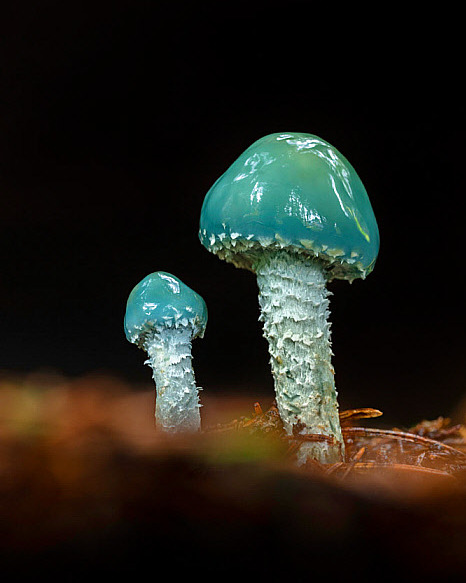
Verdigris agaric (Stropharia aeruginosa)
Photo by Guy Edwardes
#Stropharia aeruginosa#Stropharia#verdigris agaric#mushrooms#fungi#blue#blue mushroom#blue fungi#colorful mushrooms#colorful fungi#mushroom photography#fungi photography#nature
19 notes
·
View notes
Text




Stropharia aeruginosa
#Stropharia aeruginosa#verdigris agaric#mushrooms#fungi#mycology#mushroom photography#forest floor#forestcore#naturecore#nature#nature photography#original photographers#photographers on tumblr
598 notes
·
View notes
Text
Stropharia aeruginosa
Commonly known as the blue-green stropharia or verdigris agaric.

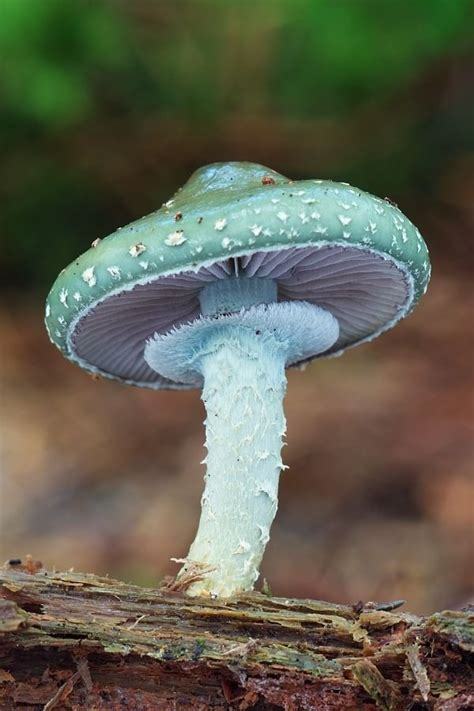
Another very pretty blue mushroom!
Stropharia aeruginosa can be found growing on rotting wood in Europe, Iran and parts of North America. It is typically found in woodland and on roadsides.
Part of the genus Stropharia (or roundheads). As the mushroom ages its cap broadens and becomes umboate, which means it gaines a little round bump in the centre of its cap! Example of a verdigris agaric with an umbo on the left:


Young mushrooms (right) are vivid green/blue and are very slimy. As they age their colour fades and becomes yellow, this is usally found around the centre of the cap. The mushroom eventually loses all of its original pigment, here are some examples:


Weather the mushroom is edible is debated many guidebooks state that it is poisonous while according to others it is edible and has a mildly spicy taste.
There is little known about the effects of the mushroom if it is poisonous, or what sorts of toxins it contains.
#This one is the background on my blog#thanks for all the notes on my first post!#mushrooms#fungi#fungus#Stropharia Genus#soupandmushrooms#More blue mushrooms!#Stropharia aeruginosa
182 notes
·
View notes
Text


So, I've been playing a lot of Dandy's World lately... And here is my toon, Gino! A chill shroom going with his own pace, loves a nice hot chocolate on cool days.
He's based on mushroom that grows around where I live. c:
#my art#Gino#Dandy's World#Dandy's World OC#OC#original character#mushroom#toon#roblox#get spored on twisted Shrimpo#you silly#also anyone curious about which specific mushroom;#it is called blue-green stropharia! c:
39 notes
·
View notes
Text
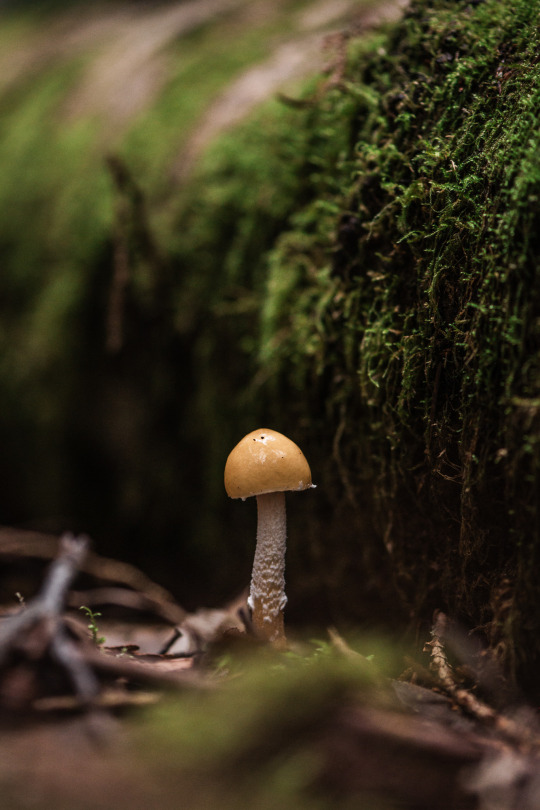
Lone Questionable Stropharia
#artists on tumblr#original photographers#original photography#hiking#pacific northwest#nature#nikon#orofeaiel#washington#pnw#mycology#mycophile#goblincore#moss#mushrooms#questionable stropharia#forest finds#forest floor
63 notes
·
View notes
Text
FOTD #108 : blue roundhead! (stropharia caerulea)
the blue roundhead is an agaric fungus in the family strophariaceae :-) it grows as a saprophyte in meadows, roadsides, hedgerows, gardens, & woodchip mulch in both europe & north america !!
the big question : can i bite it?? nah, it is inedible.


s. caerulea description :
"fruit bodies have conical to flattened caps measuring 2–7.5 cm (0.8–3.0 in) in diameter. they usually have a low, broad umbo. the colour of the cap depends on its age, ranging from pale blue-green to yellowish-bluish green. there is often a whitish zone around the margin, which invariably has bluish-green tints. when moist, the cap is sticky with a cuticle that may be readily peeled; dry caps are smooth & shiny. gills are initially pale purplish-brown, becoming darker brown in age as the spores mature. they have an adnate or sinuate attachment to the stipe. the stipe has a short-lived annular (ring) zone."
[images : source & source] [fungus description : source]
#• fungus of the day !! •#[stropharia caerulea]#: blue roundhead :#108#||#mycology#mushroom#fungus#mushrooms#earth#cottagecore#fungi#forestcore#foraging#nature#stropharia caerulea#blue roundhead#fotd#fungus of the day
145 notes
·
View notes
Note
Hello, how are you? I absolutely love your OC Rick (s-44) and OC Birdperson (h-810) and your art style rocks! It is always wonderful to see what adventures your OCs get up too. Do you have some favourite songs for your characters? I have been enjoying creating song lists for the different characters in Rick and Morty recently. There have been a couple of songs I have listened to which makes me think of your OCs. I can really see how Rick would sing the following two songs towards Birdperson. To me, these melodies match the tone of your drawings😊🎸
Ed Sheeran - Shape Of You (Rock Cover by Fame on Fire) Pop Goes Punk Saint Asonia - Blinding Lights I hope this is ok 😊☕🍰
Hey! Thank you sm for the ask and kind words @rickteacakes ! I'm glad you enjoy seeing my guys' (mis)adventures :D
Of course it's OK <3, I love hearing people's interpretations of my stories. So, about the music, lemme use this ask to also give some OC music lore:
BP is more of a musician and appreciates many genres (altho he has a soft spot for metalcore), so the songs you've listed would actually be more of his thing (and he'd probably sing it to Rick).
OF Rick is a 90's punk-rock/skate punk guy to the bone. His favourites include Lagwagon, NOFX, No Use for A Name, Pennywise...that sort of thing, just to mention a few. He'll also enjoy some ska-core and ska-punk like Catch-22. Basically he loves *anything* with a 4x4 tempo! :>
Here's some examples:
Lagwagon - May 16
NOFX - Just The Flu
No Use For A Name - On the Outside
Catch-22 - 1234 1234
That being said, *their* song is and will always be "After the Party" by The Menzingers , representing the mushy, sappy, lovey-dovey idiots they are ! <3
Again, thank you for the music rec that was a fun listen ;y
Have a nice day and Happy 2025!
#I hope this wasn't an ear beating if you check the songs lol#but that's his thing hard and fast all the way#stropharia replies#open flesh rick#rick s-44#birdperson h-810#birdrick au#OC lore I guess?#asks
8 notes
·
View notes
Text

Stropharia aeruginosa
5 theme of Mermay_shrooms


#mermay 2024#mermay#art#artists on tumblr#mermay_shrooms#украрт#darkne1t#digital art#mermaid#digital illustration#my art#small artist#look at my art pls#ukrainian artist#ukrainian art#ukrart#art challenge#mermaid art#mermay art#illustration#украртпідтримка#український tumblr#українськіхудожники#діджитал#ілюстрація#ілюстраториукраїни#арткозацтво#artist on tumblr#humanization#stropharia aeruginosa
22 notes
·
View notes
Text

Questionable Stropharia
2 notes
·
View notes
Note
What types of animals and plants do they have in Realmia?
Plants, I don't have much on just yet... most of Realmia's flora is borrowed from the lands it's comprised of, or crossed between worlds! But creatures? I've got two really good ones--

Pikipaws, pronounced "Picky-Paws", are Realmia’s most common and most biologically diverse species. They can be found anywhere, day or night, alone or in communal spaces. Infamous for being nature’s best thieves, they prove themselves to be terrible pests if you happen to have a hoard of interesting items.
Thanks to having rubbery bones few and far between what’s mostly a gelatinous muscular structure, Pikipaws have immunity to being crushed, flattened, and being hit with blunt force. Also, whilst Pikipaws do not have any appendages resembling fingers, they can still pick things up either by putting them in their mouth, or more commonly, licking their paws and grabbing the item that way. Their saliva is a strong natural adhesive often used to glue things together or to cling onto objects or terrain for extended periods of time.

The easiest way to identify them is by their flat faces and lack of a visible nose, as well as their distinctive facial features such as beady eyes and a mischievous smile, alongside their small stature and fat (storing) tails. That’s where the similarities end, however, as having so much variety allows many bases to be covered. Some are feathered, scaly, furred, have horns or other keratin growths like spines and spikes— they could even be a mix of these.
Realmia's second most common animal is the luggabeast!
Pronounced a bit like 'lug-uh-beast', these pack animals can grow to be up to 10 (or rarely, 15) feet (304.8-457.2 cm) in height! Of course, some of them tend to be much smaller than this-- as they're usually bred for specific purposes! More often than not, luggabeasts are used for transportation, be it items or people.
Ground-bound beasts tend to have flat spines, allowing portable cabins and inns to sit atop their backs comfortably with minimal shifting. This gives them a bit of a disadvantage, making them slower and clunkier than some smaller breeds. However, due to lacking natural predators that could easily consume them, they're relatively safe from harm! Ground-bound luggabeasts that are frequently seen hauling transport cabins around are more often than not protected with a handler or by a transportation sigil carved into the gold buckles of the straps keeping the cabins on their backs.

(Here's a low quality old example from the Showhostin' comics...)
Luggabeasts are easily defined not by their size-- but rather by their numerous bioluminescent features: huge eyes with peanut shaped pupils and black sclera, gelatinous horns and spines running down their tail that're protected with a thick layer of transparent keratin, large feet that bear rough yet squishy paw pads, and of course-- a bone "gemstone" that sticks out of the center of their chest.
Contrary to the impressions an illustration may give you, their heads are not at all like an exposed skull! Their flesh is quite stocky, and the thin layer of white fur on their faces cover up all of their glowing blood and marrow. Their small noses may not allow for an acute sense of smell, but that broadens the territories they'll tread (nobody wants to walk through a smelly place and they don't either)! To compensate for this, they have keen hearing and spectacular eyesight-- if we're going to be specific though, they also have night vision that allows them so see everything clear as day!

All of that aside, it's time to brief on the variants; some luggabeasts have fins and gills as opposed to fur, and their bone-gem is far smoother to suit the currents of the sea. Alas, they pail in comparison to aerial luggabeasts. Aerial beasts tend to have curled sets of horns, the set curling around the ears with reins often affixed to them rather than the entire face (not like that would be easy, the muzzle of a luggabeast is much smaller than that of a horse). Aerial beasts also don't have the same flat spine that ground-bound beasts do, making it less awkward to fly with their feathered wings. Speaking of feathers, their tails aren't scaly like the other variants but are instead covered in slick contour feathers to keep them warm at higher altitudes. As their spine lacks that strange shape, they're considered optimal for luggabeast racing and are trained for the sake of competition.
An honorable mention would be ground-bound meadow beasts, as their fur is covered in luminescent dust that will clump up in patches and can be easily collected for various purposes, including medical care! As it's safe to ingest, it can help highlight a problem one might be having internally.
#realmia#realmian creature feature#OC: Narrator#OC: Stropharia#OC: Muffin#for the record! White is a pikipaw. My sona is a horrible little thieving rat.#Also narrator is special in the sense he has digits. Same for white. Pikipaws don't usually have fingers or toes#white responds to the wall
5 notes
·
View notes
Text
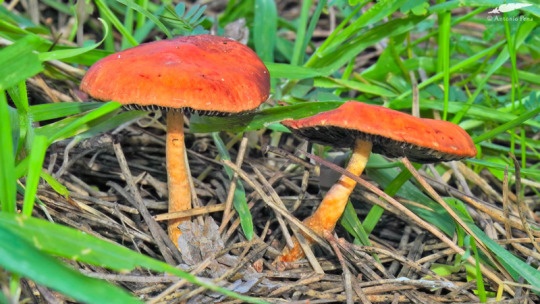
Stropharia aurantiaca
Sintra/Portugal (11/01/2024)
[Nikon P900; 50mm with flash; 1/30s; F6,3; 200 ISO]
5 notes
·
View notes
Text

Stropharia aeruginosa
#Stropharia aeruginosa#verdigris agaric#mushrooms#fungi#mycology#mushroom photography#forest floor#forestcore#nature#naturecore#nature photography#original photography#photographers on tumblr#one of my fave mushrooms that I almost never can find
387 notes
·
View notes
Text


O, to be the tiniest Stropharia rugosoannulata in a tomato bed
#fox gardens#gardening#mushroom#winecap#king stropharia#permaculture#mushrooms#these guys taste like potatoes
5 notes
·
View notes
Text

welcome to my adult / mycology page - hoping to find people who are curious about mushrooms and who don’t mind getting some spicy nature pics (this is a questionable stropharia)
6 notes
·
View notes
